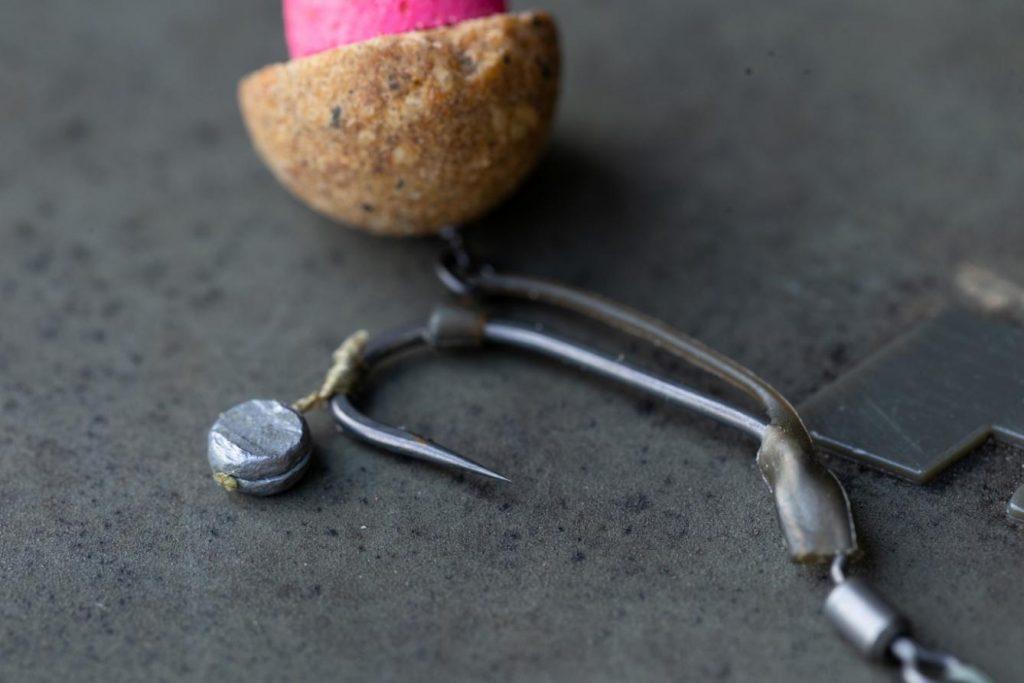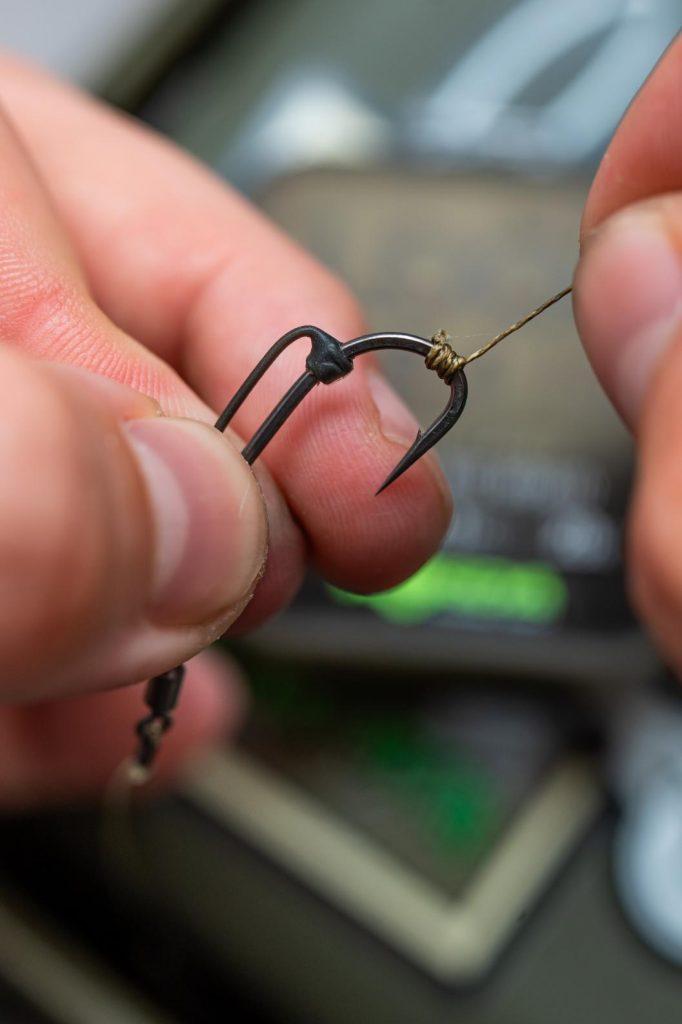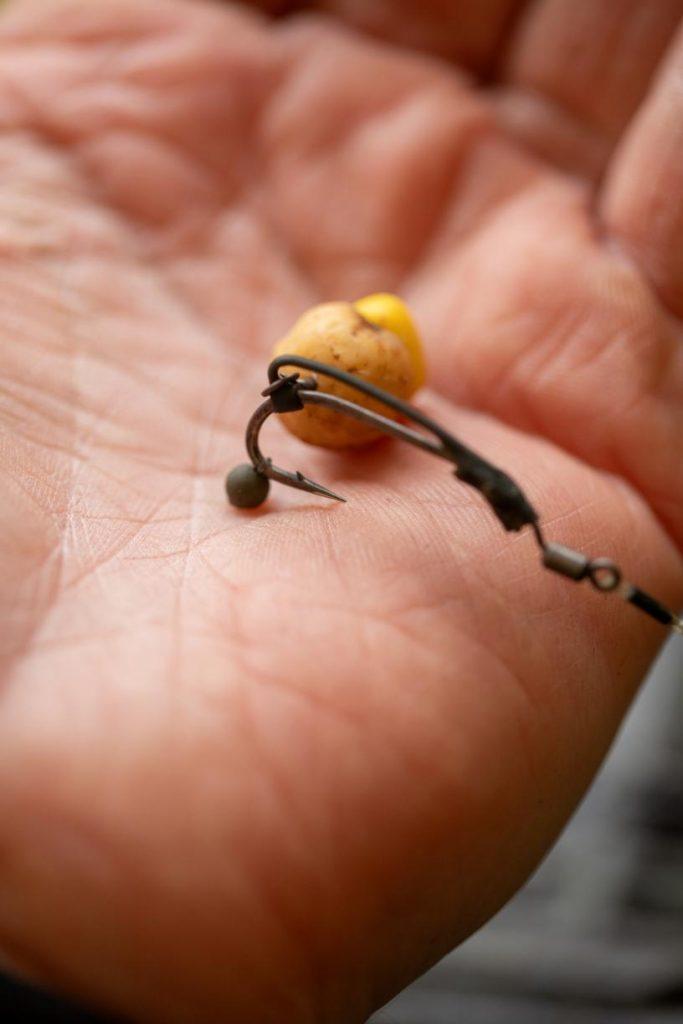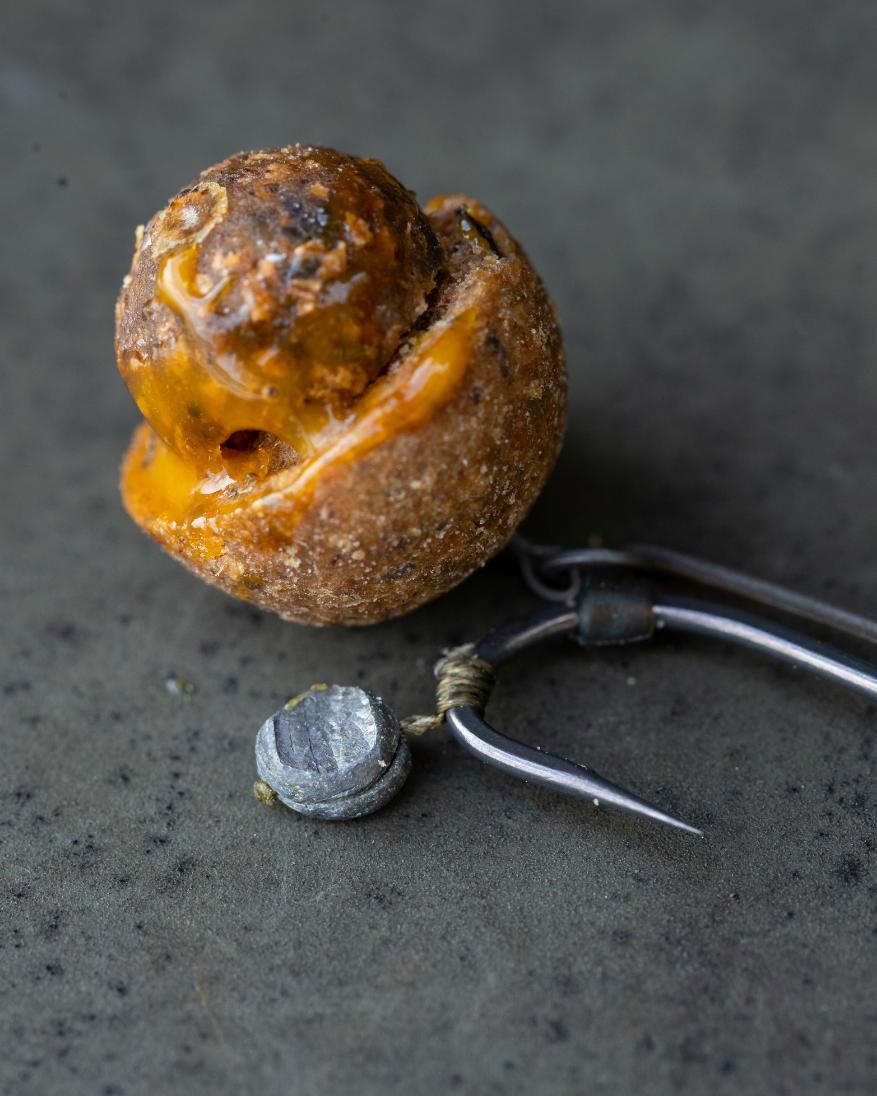There’s a lot of talk about the Shot on the hook rig. Is it new?
Far from it. It’s been almost a quarter of a century since its inception. Conceived by the fertile minds of Frank Warwick and Jon ‘Shoes’ Jones on the banks of Birch Grove, it was designed to fish a pop-up or wafter very close to the lakebed. It has recently come back into focus due to a version of it proving successful in countering repeated ejections in Korda’s latest Underwater video.

The shot on the hook rig
How does the rig work?
Although various versions exist, the mechanics are fundamentally the same, and the rig’s effectiveness is derived from its defining feature—a shot on the hook. The split shot not only balances the hook bait but also, when positioned just below the barb, makes the hook point heavier, allowing it to hang down in a prone position and grab hold of the bottom lip instantly—and we do mean instantly.

The shot on the hook rig grabs the bottom of the mouth
Does the shot interfere with the hook penetration?
No, it shouldn’t hinder the hooking ability, regardless of the version you use. The original version has the shot attached via a loop of braid, which slides freely. Later versions are tied more tightly but still allow for some movement. There are also ready-made weights available from a few brands that slide over the hook point and grip it lightly, enough to move when a fish is hooked.
Will the shot fall off if I use barbless hooks?
If you use proprietary weights or tie the shot securely, you should have no issues. To use the sliding version, add a hook stop at the bottom of the bend to prevent the shot from slipping off.
How do I tie the shot on the hook rig?
That’s a slightly tricky question, as the concept of the Shot-On-The-Hook Rig is more versatile than just one rig. The shot element can be applied to several hooking arrangements. It started with a long-shank hook knotless-knotted to a coated braid with a standard hair rig trapped on the back of the shank, roughly opposite the barb, secured blowback style with shrink tubing. It also incorporated a shrink tube line-aligner (well before kickers were a thing). Designed to fish a pop-up or wafter, the rig sits with the hook point and eye touching the lakebed, while the shank remains upright.

One method is to use a piece of braid coming off the bend of the hook to attach the shot
Variations now use Ronnie rig or turbo German setups to facilitate changing the hook. A curved shank hook is clipped to a small quick-change swivel tied to the hook link, offering options for different materials and rig rigidity. Braid (coated or uncoated), nylon, and fluorocarbon can all be used, allowing the rig to suit the lakebed and lead system—bonus!
Now, for the crucial part—the shot on the hook. The size of the split shot depends on the buoyancy of your hook bait. A shot between no.4 and BB is typically suitable, with no.1 being a popular choice. The weight can be attached in one of three ways:
- Fold a piece of braid over the hook bend and nip on a split shot. It should be tight enough to prevent it from sliding over the barb but loose enough to move freely. Trim and blob the tag ends to keep the shot in place, and slide on a hook stop for barbless hooks. This was the original method.
- Use a whipping or marker knot (the kind used to tie marker elastic) and pinch the shot onto the tag ends, which are then blobbed to secure it. Position the shot where the bend meets the point.
- Thread a purpose-made tungsten weight over the hook point until it reaches the bend.

When is it best to use the Shot-On-The-Hook Rig?
It depends on which incarnation of the rig you choose. Danny Fairbrass’ version was created to solve a specific issue—fish repeatedly ejecting the hook bait and evading capture (as seen on underwater footage). It would be ideal to use if you suspect the same is happening to you. This version was used with an inline lead for maximum hooking efficiency over firm ground but could be paired with a lead clip on softer, siltier terrain.
Frank and Jon’s original design also addressed a specific challenge: fish being caught on singles. They would take wafters close to the bottom but avoid pop-ups sitting higher. This rig allowed pop-ups to sit very close to the lakebed while retaining excellent hooking efficiency. It soon proved its worth in many other scenarios.
One version or another of this rig will be useful in many situations, from light to heavy baiting, and from tightly baited spots to broad spreads of boilies. The main requirement is clean ground. It can be used on gravel, but remember that the hook point sits on the bottom, so regularly check its sharpness. Firm silt, sand, and clay are all ideal substrates for presenting this rig.

The shot on the hook rig may not be your go-to for every situation, but it’s a valuable addition to your rig arsenal. Have you been on fish but struggled for bites? Do you sometimes leave the water thinking you should have caught more? Do you ever suspect you’re getting done? If the answer to any of these is ‘yes’, then perhaps it’s time to try the shot-on-the-hook rig.
